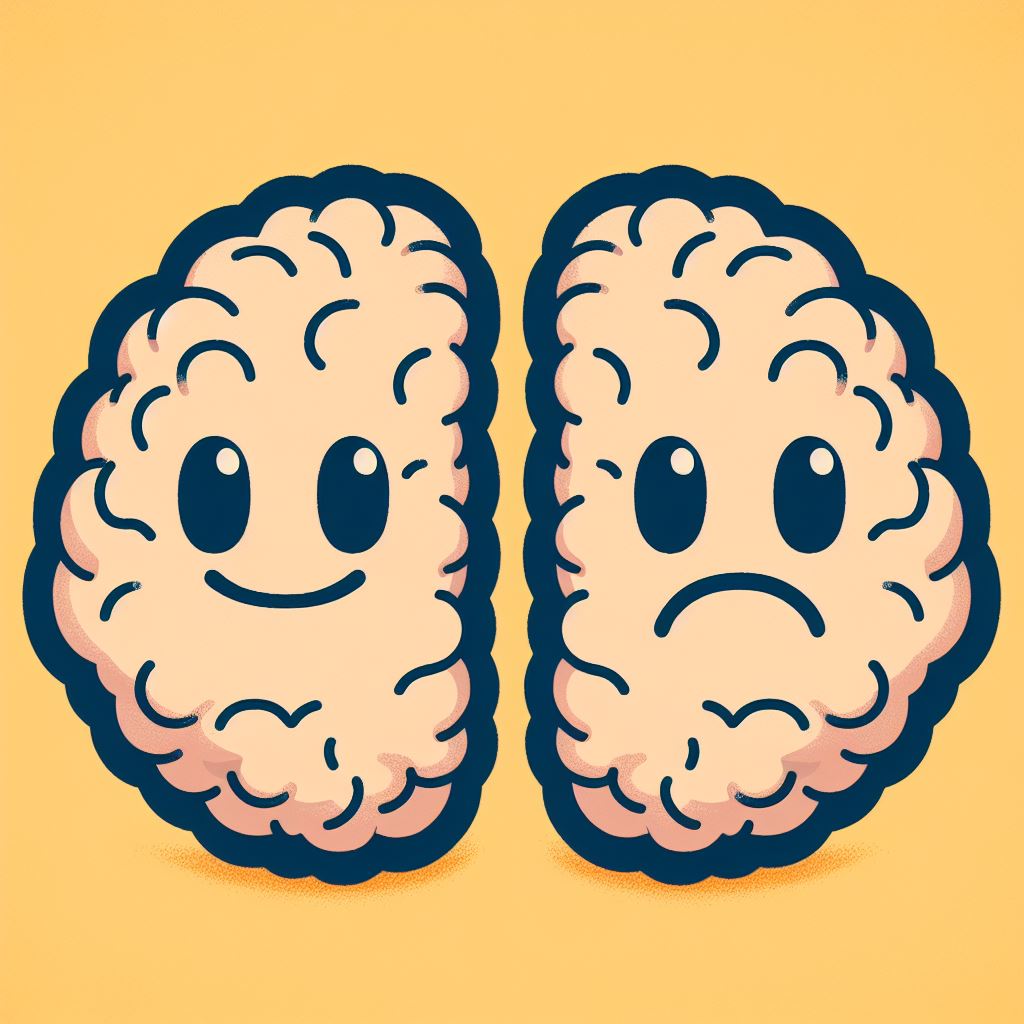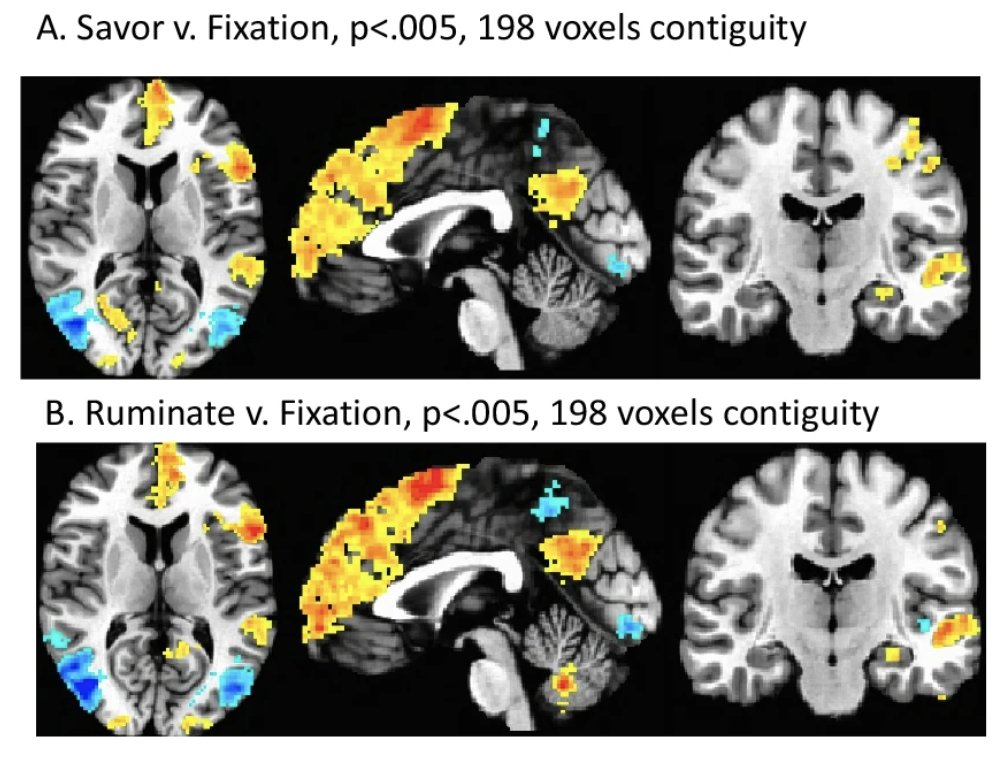
Rumination is the cornerstone of depression and anxiety. It’s characterized by an excessive replaying of negative thoughts and memories. A new study finds rumination activates the same brain regions as savoring, or the replaying of positive thoughts. Can depressed people learn to use their brains’ natural abilities in a more constructive way?
Thinking is a normal part of our everyday existence as human beings. Research has shown that the average person has about 6,200 thoughts per day, but what do we often think about?
Many of our thoughts aren’t conscious or deliberate. They occur automatically or subconsciously, such as those related to habitual behaviors or bodily functions. A lot of daily thinking seeks to answer simple questions like, “What should I eat for dinner?” or “What should I do this weekend?”
This type of thinking guides our daily choices but it doesn’t have as much direct influence on our mental health or well-being. Most daily thoughts have a neutral emotional valence that wouldn’t be considered “positive” or “negative.”
Of course the content and nature of our thoughts can vary widely throughout the day. Any single thought can be caused by multiple factors like external stimuli (a person or object), internal states (feeling good or bad), and environmental factors (the place you are).
From a mental health standpoint, there are two basic patterns of thinking that psychologists pay close attention to (especially during therapy sessions):
-
Rumination = focused and repetitive negative thinking
Savoring = focused and repetitive positive thinking
Both of these types of thinking require time, energy, and attention.
They are often internally generated thoughts based on a person’s mood or mental habits. In many ways they are opposites of each other but they also share remarkably similar patterns in the brain, as we’ll see in a new study.
Let’s first dive more into what “rumination” and “savoring” look like in the real world.
Rumination
Rumination is one of the core symptoms of depression and anxiety. It’s when you constantly replay negative thoughts and memories in your head throughout the day like “Nothing matters,” “I suck,” or “No one likes me,” to the point where it negatively affects your mood and daily functioning in life.
One common example of rumination is when you are about to fall asleep, then your mind starts thinking about all your deepest embarrassments, regrets, and failures. If our minds are a movie theater, then rumination is when it only plays genres such as tragedy, drama, and horror.
Of course we all get caught in “negative loops” every now and then – and it’s normal to have negative thoughts when something bad happens to us – but excessive rumination can become debilitating if we never know how to reframe, downplay, or redirect our thinking.
Savoring
Savoring is in many ways the opposite of rumination. It’s a focus on replaying positive thoughts and memories, including reminiscing about past accomplishments, things you are grateful for, or uplifting ideas.
Unsurprisingly, the ability to easily recall and reflect on positive memories is associated with less depression and anxiety. This isn’t necessarily because happy people have more positive memories, but because they often think about them more and have easier access to them.
In simplest terms, savoring is the act of prolonging happiness and positive emotions. It requires finding some good in the world, and then extending that good feeling through reflection, mindfulness, conversation, writing, or creative expression (like photography, music, or art).
Thinking in the Brain
What do rumination and savoring look like in the brain?
In one new study published in Cognitive, Affective, & Behavioral Neuroscience, researchers looked at fMRI scans of people wile they were “ruminating” vs. “savoring.” Surprisingly, the findings revealed that these two seemingly opposing cognitive processes share common pathways in the brain.
Despite the subjective differences in experience between rumination and savoring, on a neurological level they exhibit striking similarities.
Here’s a look at the brain scans from the study:

At a glance there’s an intriguing overlap, it’s hard to tell whether a person is “ruminating” or “savoring” just by looking at a brain scan.
Both processes activated key regions of the brain, including the prefrontal cortex (responsible for conscious thinking and executive functioning), the hippocampus (associated with learning and memory), and the amygdala (involved in emotional processing).
Interestingly, participants who experienced more intense negative emotions during “rumination” also experienced more intense positive emotions during “savoring.” This further highlights the similarities between these cognitive processes.
The Lesson
What are the practical implications of this study?
One major takeaway is that those who often get trapped in negative cycles of rumination also have the capacity to use their brain for savoring and positive thinking. That may be an oversimplification or “easier said than done,” but the possibility is real.
If your brain knows how to ruminate, then your brain also knows how to savor.
So then the question becomes, “How will you use your brain today?”
Enter your email to stay updated on new articles in self improvement:
